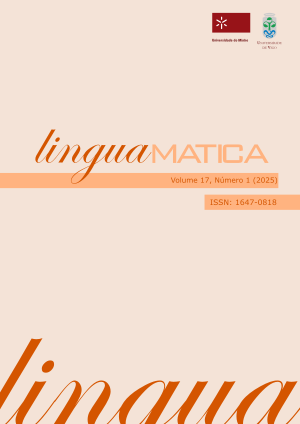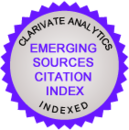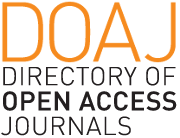A elaboração de um léxico-gramática para os adjetivos do Português Brasileiro
Resumen
Este artigo descreve uma classificação e descrição em larga escala, ainda em andamento, dos adjetivos do português brasileiro. Classificamos em predicativo ou não predicativo os 3.367 lemas mais frequentes de adjetivo em um corpus de referência, o que corresponde a 92.09\% das ocorrências de adjetivos nesse corpus. Os adjetivos predicativos receberam classificações adicionais com base no número (um ou dois) e tipo de argumentos (grupo nominal ou oração), o que levou a seis classes diferentes de adjetivo predicativo, acrescidos de outras duas subclasses. Também descrevemos as propriedades distribucionais de cada adjetivo predicativo: sujeito e complemento humano ou não humano, modo dos argumentos oracionais, verbos copulativos e preposições. A classe mais representativa foi a dos adjetivos não predicativos, seguida pelos adjetivos intransitivos com grupo nominal e com sujeito oracional, respectivamente. Os adjetivos tendem a se construir com verbo copulativo ser, selecionar mais argumentos não humanos e, quando estes são orações, são mais comumente reduzidas de infinitivo ou orações no modo subjuntivo. As preposições mais comumente aceitas foram para, de e a.
Derechos de autor 2025 Ryan Saldanha Martinez, Jorge Baptista, Oto Araújo Vale

Esta obra está bajo licencia internacional Creative Commons Reconocimiento 4.0.
Los autores que envíen sus trabajos a esta revista implícitamente estón de acuerdo con los siguientes términos:
- Los autores retienen los derechos de autor de sus trabajos, permitiendo a esta revista su primera publicación bajo licencia de Creative Commons Attribution License, que permite a otros acceder libremente, usar y compartir dicho trabajo, citando adecuadamente la autoría del trabajo y su presentación en esta revista.
- Los autores pueden prescindir de los términos de licencia de CC y acordar por su cuenta arreglos contractuales adicionales independientes para la distribución no exclusiva y posterior publicación de este trabajo (p.e., para incluirlo en un repositorio institucional o publicarlo en un libro), citando adecuadamente su publicación inicial en esta revista.
- Además, se anima a los autores a poner en línea su trabajo (p.e., en repositorios institucionales o en su propio sitio web) en cualquier momento antes o durante el proceso de envío, ya que eso puede conducir a intercambios productivos y a un número mayor y más temprano de citas del trabajo publicado (Ver The Effect of Open Access).













